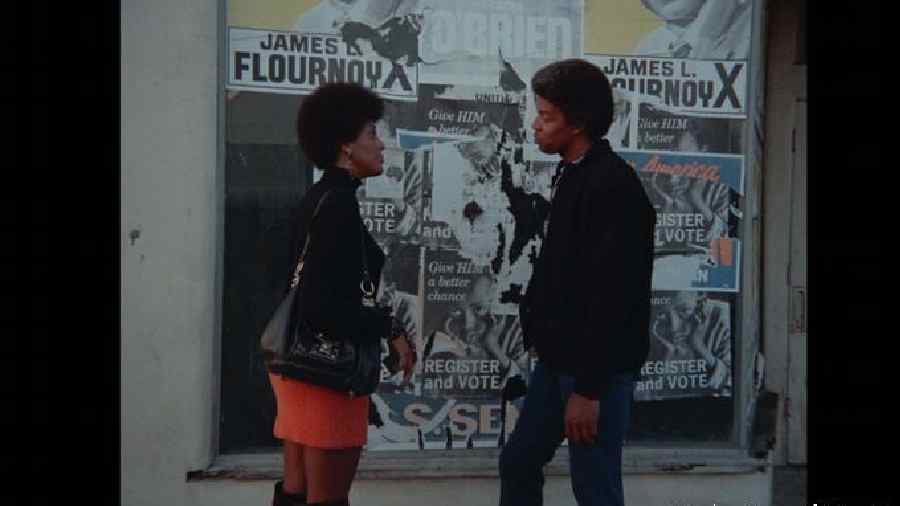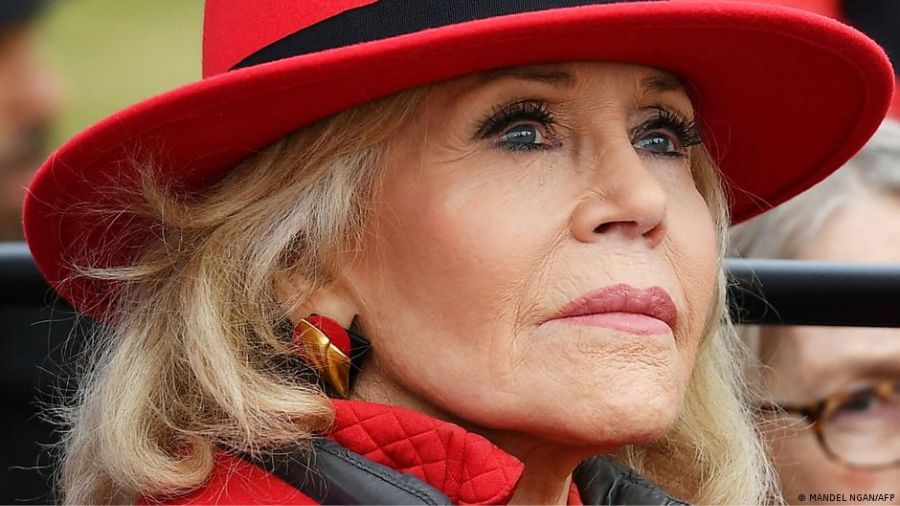When the Academy Museum of Motion Pictures opened after a yearlong pandemic delay in September 2021, the institutional focus had shifted from a celebration of cinema to exploring the role of filmmaking in a complicated world — and the influence of social movements on Hollywood productions, often criticized for being too commercial and too uncritical.
The museum's second major exhibition, "Regeneration: Black Cinema, 1898-1971," now explores and celebrates Black American contributions to film while placing them in the context of seven turbulent decades.
Over 11,000 square feet (1,000 square meters) and seven galleries, "Regeneration" displays excerpts of films made by and for Black Americans, photographs, costumes and other artifacts alongside works by contemporary Black artists Theaster Gates, Glenn Ligon, Gary Simmons and Kara Walker.
Co-curators Rhea L. Combs and Doris Berger searched archives and contacted relatives to track down promotional materials, letters and even works that had long been thought lost.
"We were trying to pull together this narrative, to understand the depth of African American participation in film," said Combs, director of curatorial affairs at the Smithsonian's National Portrait Gallery. The curators studied collections such as the New York Public Library's Schomburg Center for Research in Black Culture.

'Regeneration: Black Cinema, 1898-1971' runs until April 9, 2023, at the Academy Museum of Motion Pictures Deutsche Welle
'A treasure hunt'
Films, it turned out, were some of the more difficult objects to recover in many cases. "Even if you want to show a clip of a movie in one of our montages, you can't because you don't have it available anymore," said Berger, the Academy Museum's vice president of curatorial affairs. "So sometimes there are only particular objects that survive, such as an advertisement or a poster, but the film hasn't survived. In other cases, we found works that had been considered lost and that we were able to restore for our exhibition."
Among the works recovered for "Regeneration" was Robert L. Goodwin's 1971 film "Black Chariot," which had been mentioned in books and media of its time, but screened only briefly. "No one outside of a handful of people had actually seen it," Combs told DW.
She was able to track "Black Chariot" down through relatives of Goodwin, who died in 1983. "It wasn't completely deteriorated, even though it was in some apartment building with no air conditioning — it had not seen the light of day," she said. "The feeling was unbelievable," she added. "It's a treasure hunt."

Freedom movements and civil rights history are an important part of the exhibition Deutsche Welle
Another film recovered — in the Academy's own archive — was "Reform School," which the museum re-premiered on Thursday in one of its house cinemas.
Berger said the film offered critiques of carceral systems that remain relevant today, and also significantly gave a starring role to Louise Beavers, who appeared in scores of films over a 33-year career, but generally in secondary, tertiary or uncredited roles, and often cast as a servant of some sort.
"Reform School" is an all-Black-cast social drama from 1939, made the same year as "The Wizard of Oz" or "Ninotchka" or even "Gone With the Wind," but independently from Hollywood, Berger told DW, adding that Beavers "commands the narrative in a most amazing way, and that film proves that it could have been very different if she were given more chances in the wider entertainment industry."
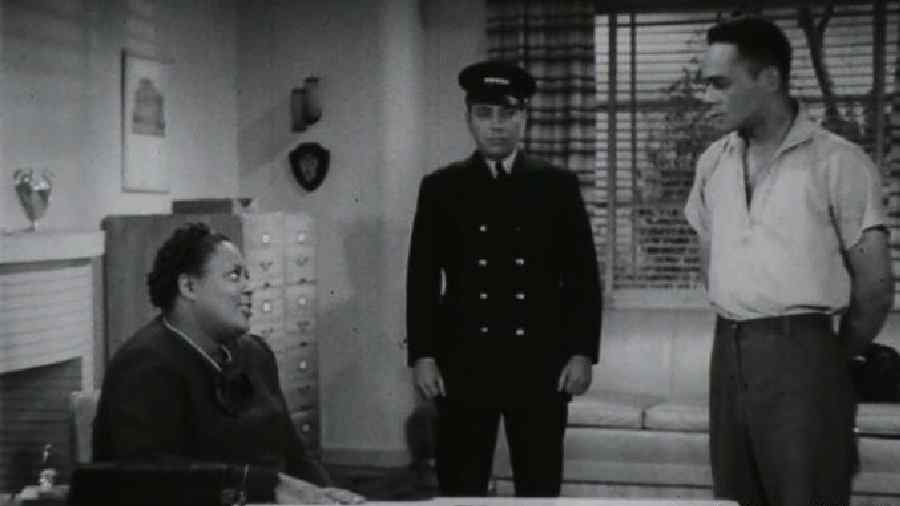
'Reform School' features Louise Beavers (l), who was posthumously inducted into the Black Filmmakers Hall of Fame in 1976 Deutsche Welle
Black artists abroad
Though "Regeneration" focuses on US films and filmmakers, the curators didn't limit their research to the United States. Many of the creators highlighted in the exhibition sought and found audiences and sympathetic ears abroad during their careers.
"Black artists from the United States had an amazing impact on different places in Europe, for example, such as Paris or Berlin, in particular for Germany, or London," said Berger, who received her PhD from Braunschweig's University of Art. "So I think those places were really important hubs of the entertainment industry at various moments and times and afforded platforms for Black performers such as Josephine Baker, Nina Mae McKinney and Paul Robeson."
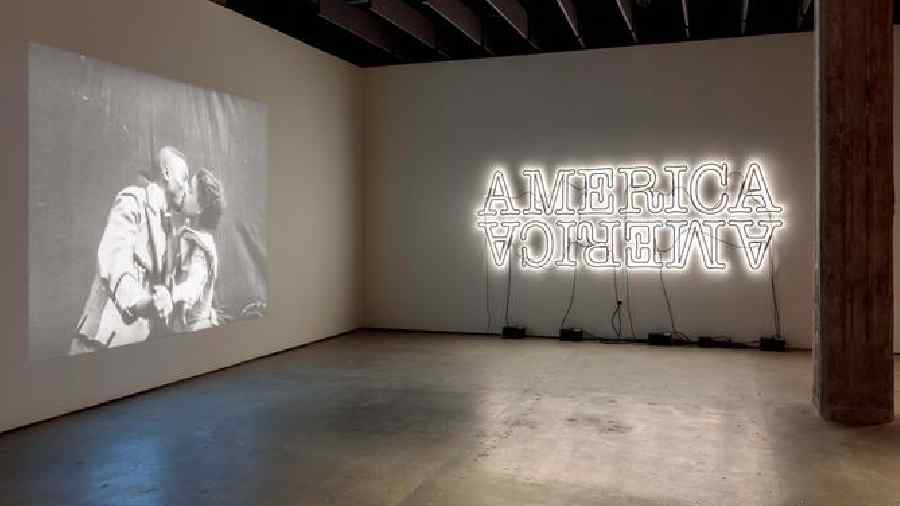
'Something Good — Negro Kiss,' from 1898, shows the first known screen kiss between Black actors Deutsche Welle
In Germany, the curators found that the Gestapo had surveilled Robeson — a stage and cinema actor who in the McCarthy era would be sidelined in the United States for his work as a prominent civil rights activist and antifascist — as he traveled through Europe in 1937. "He was considered a threat, you know, not only to the United States," Combs said. "The find through the archive in Germany allows us to know that he had a bigger impact and influence beyond the United States."
Later, after the partitioning of Germany, Robeson was a celebrated guest in East Germany, where he was given medical and psychiatric care following unsuccessful treatment in London, as well as feted and conferred such titles as an honorary doctorate from the Karl Marx University in Leipzig.
"The reception changes over time, from someone being surveilled at one point and then several years later they're receiving a hero's welcome," Combs said. "And that's that sort of negotiation that many Black performers had to navigate: the sea change that would occur in many instances that were outside of their control but always sort of situated in this reality of trying to negotiate race and gender and identity, national identity, all at the same time. It's fascinating."
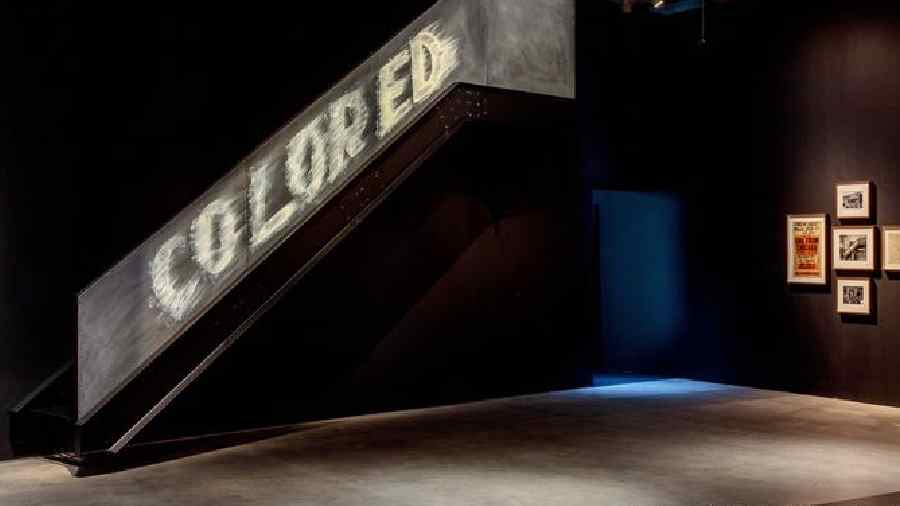
A staircase labeled 'Colored' represents the segregated balcony seating in cinemas Deutsche Welle
Perseverance and possibilities
The Academy Museum has set up a microsite allowing people who cannot make it to Los Angeles before April 9 to interact with many aspects of the exhibition.
The works that might have been on display had they not been lost are, of course, part of the discussion — as is the role of the industry that failed to preserve them. "Despite all of these pressures for suppression and repression, there has been a long-standing commitment of Black artists to try to push through that, and that is what we showcase through this exhibition," Combs said. "The participation has always been there despite all of these active and even sometimes systemic ways of repression."
"Regeneration" collects the work and adjacent objects that remain to honor the people whose perseverance made Black American cinema a history of possibilities.
"For me what was so exciting to work on with Rhea is to have a really robust showcase with this exhibition that expands the film canon, that really stretches its limits with the realities there were," Berger said. "And so, for us to be able to recover and discover these realities of Black participation in American cinema, is a really powerful message and really allows us to understand filmmaking as a richer and more diverse aspect of American production than we might have thought."

